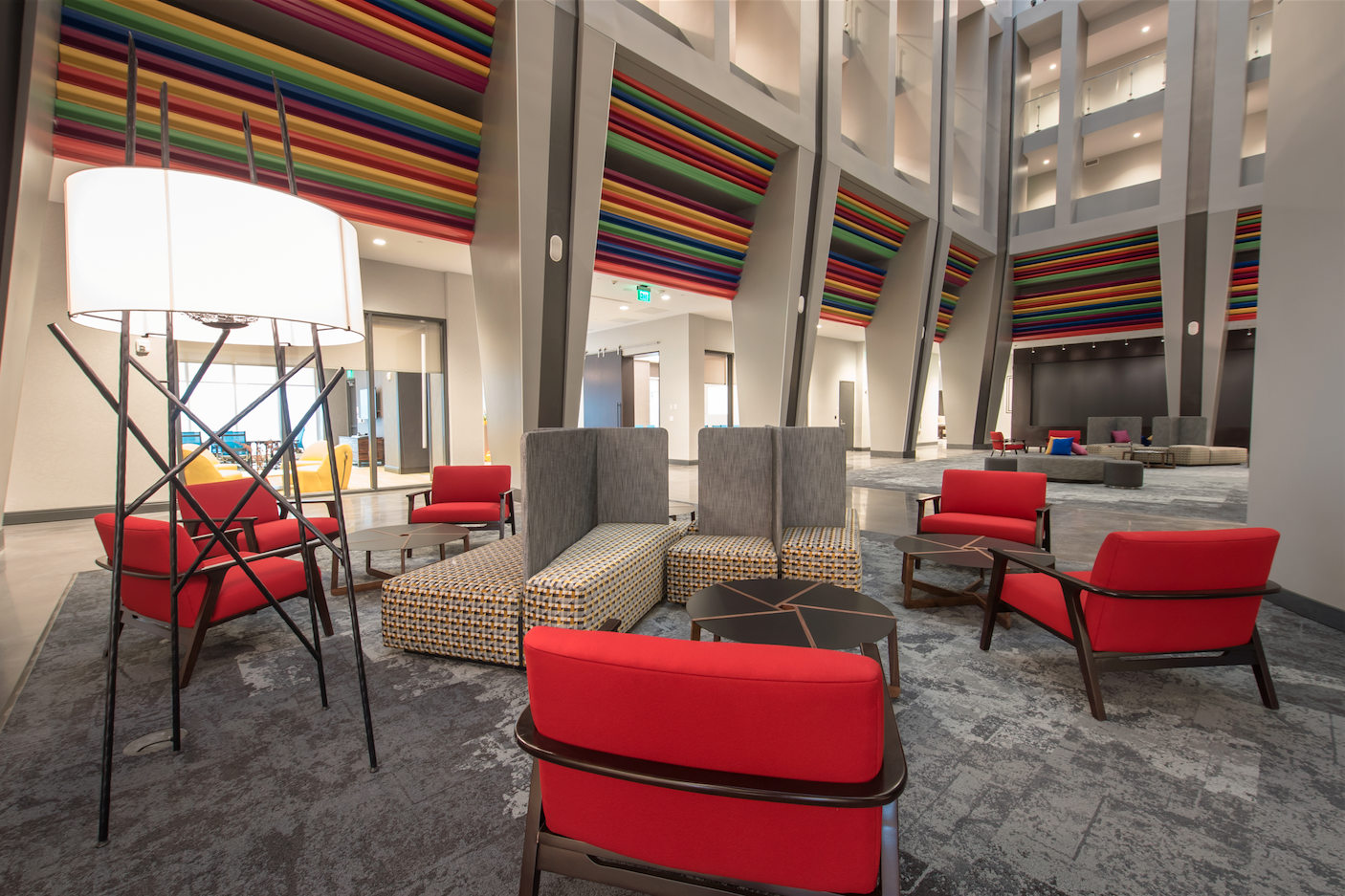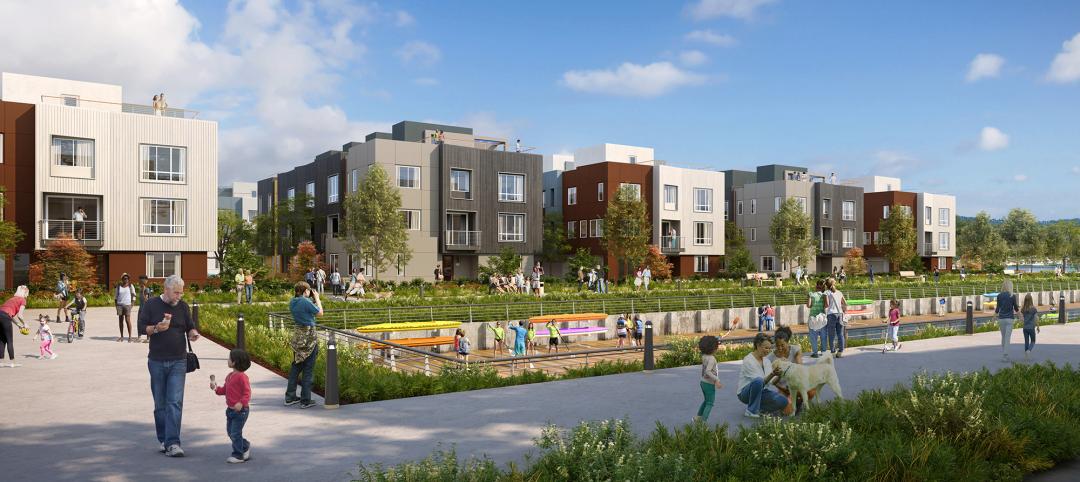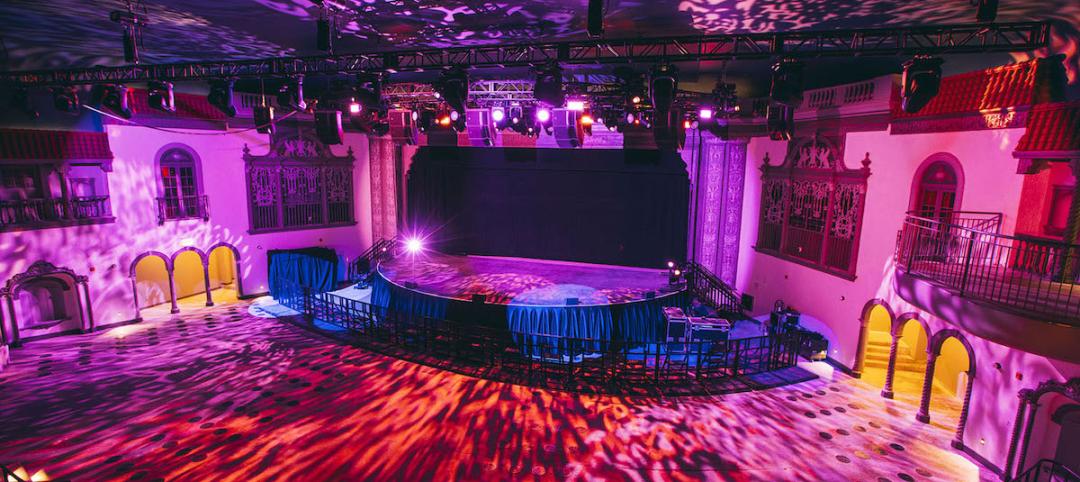It doesn’t look like much from the outside. But as they say, you can’t always judge a book by its cover.
And more interesting design flashes take over inside The Summit, A Dolce Hotel, featuring a 5,743-sf art gallery and an 11,600-sf rooftop terrace and garden space, which leads into a 4,750-sf ballroom that’s one of 19 meeting and banquet areas.
This 426,000-sf, 239-key lifestyle hotel and conference center, which opened adjacent to downtown Cincinnati on April 17, is the first hotel that Dolce Hotel and Resorts by Wyndham designed from scratch. On top of that, it’s an adaptive reuse of a parking garage that itself was once a warehouse-distribution facility.
“I think it is easily the top hotel/conference center combination in southwest Ohio,” says Chris Hopper, Executive Vice President and General Manager for Skanska Ohio, the project’s GC. RBM Development was the developer, Samach + Seo Architecture the design architect, CR Architecture & Design the AOR, and Hirsch Bednar Associates the interior designer.
Transforming a 50-plus-year-old structure into an $80 million hospitality venue, however, was not a foregone conclusion. The warehouse portion, once a NuTone factory, had been built in two stages, 1959 and 1976, and the city had no structural drawings for the 1959 work, which required the hotel’s Building Team to spend more than $100,000 on soil and load tests. Holes had to be drilled into the building’s columns to see how much steel they contained.
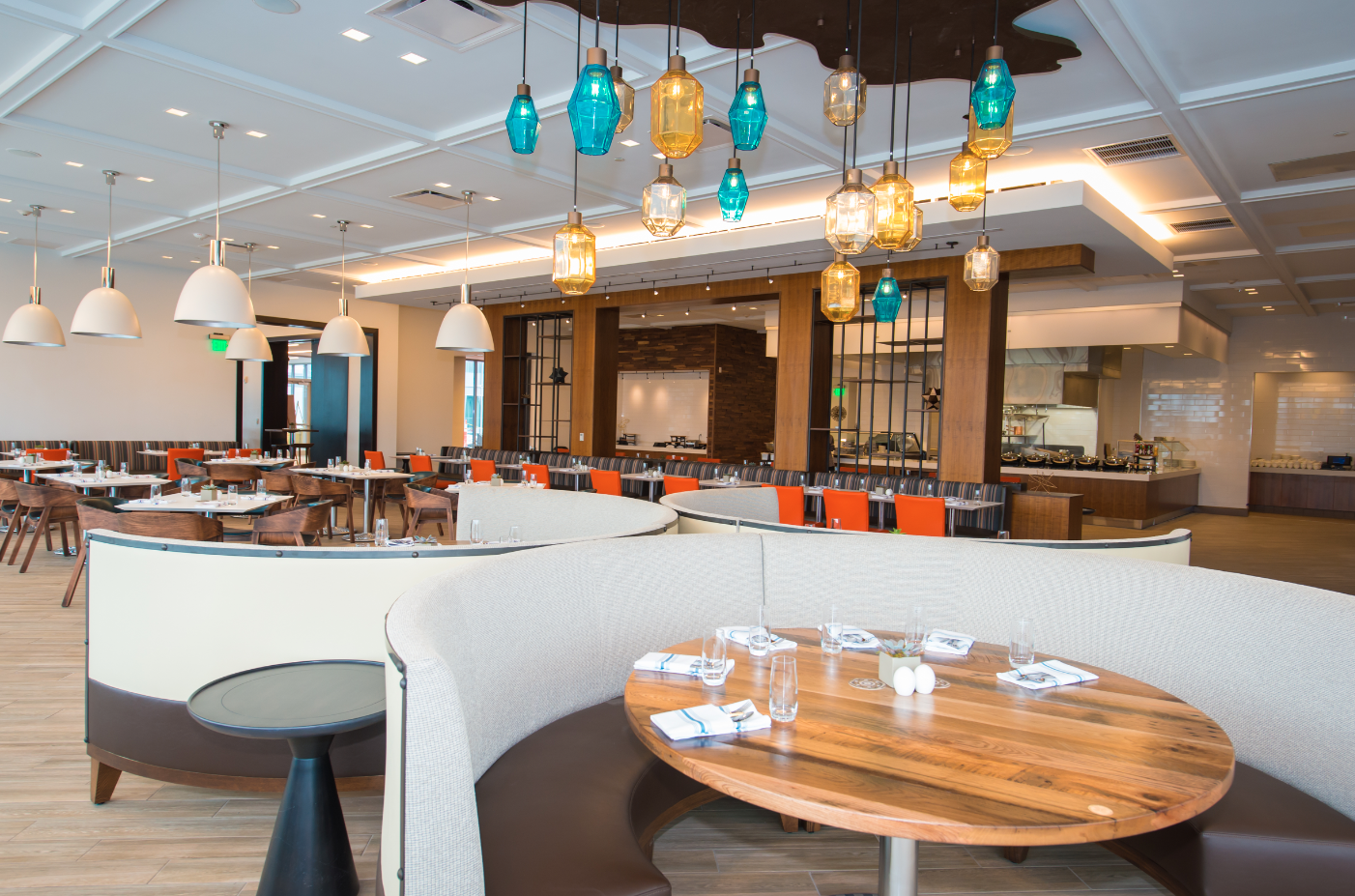 The hotel’s restaurant, bar, and conference and meeting rooms are all located on its roof terrace, which includes 19 meeting spaces with 34,000 sf. Photo: Mike Howard Photography
The hotel’s restaurant, bar, and conference and meeting rooms are all located on its roof terrace, which includes 19 meeting spaces with 34,000 sf. Photo: Mike Howard Photography
Seth Barnhard, Principal and program manager for Sitement, the owner’s rep, says there were “prolonged discussions” about whether just to tear down the parking garage and build new. “It took months of VE [value engineering] to get the cost down to where [reconstruction] made sense.”
On the plus side, the existing building offered an 85,000-sf floorplate. And the parking garage had already been stripped of its cladding to the concrete, so the Building Team pretty much knew what it was working with.
The demolition part of this job took around four months, during which Skanska cut through the structure to create the hotel’s atrium space, which was probably the most important design decision on this project.
The nine-story atrium—a first for a Dolce-branded hotel—was one of three design options that Samach + Seo presented for this project, says Raphael Samach, AIA, Partner with the New York-based firm. The atrium was selected, he explains, because it allowed the structural loads to be redistributed while giving the hotel its greatest height.
Dolce is marketing The Summit as a “lifestyle” hotel, and Barnhard says its design is meant to convey an “ongoing sense of surprise” for guests who enter through a porte cochere that leads into an art-adorned lobby—whose grey palette is flecked with color accents—and portal to the atrium with four glass elevators.
 Photo: Mike Howard Photography
Photo: Mike Howard Photography
The terrace on the roof of the hotel’s 200-slot, two-level parking deck is programmed as a destination and “oasis” for guests and visitors, says Samach. The hotel’s restaurant, bar, conference and meeting rooms are all located on the roof. Servicing the meeting rooms are nourishment “hubs,” which offer a variety of snacks and refreshments during most of the day. (The hotel has two beehives on the roof to make its own honey, and this spring intended to plant its own herb garden.)
However, Skanska still needed to install micro piles in the basement to fortify the existing building that’s supported by an unusual mixture of spread piles and piers, says Jon Budde, Skanska’s project manager.
RMB is an acronym for Red Bank Madison, a development company owned by August Troendle, CEO and Founder of Medpace, a clinical research organization. Next to The Summit, Medpace just started construction on a 250,000-sf headquarters building. The entire complex, which sites on 30 acres, will include 250 multifamily residential units, a walking path, and possibly a Food Hall.
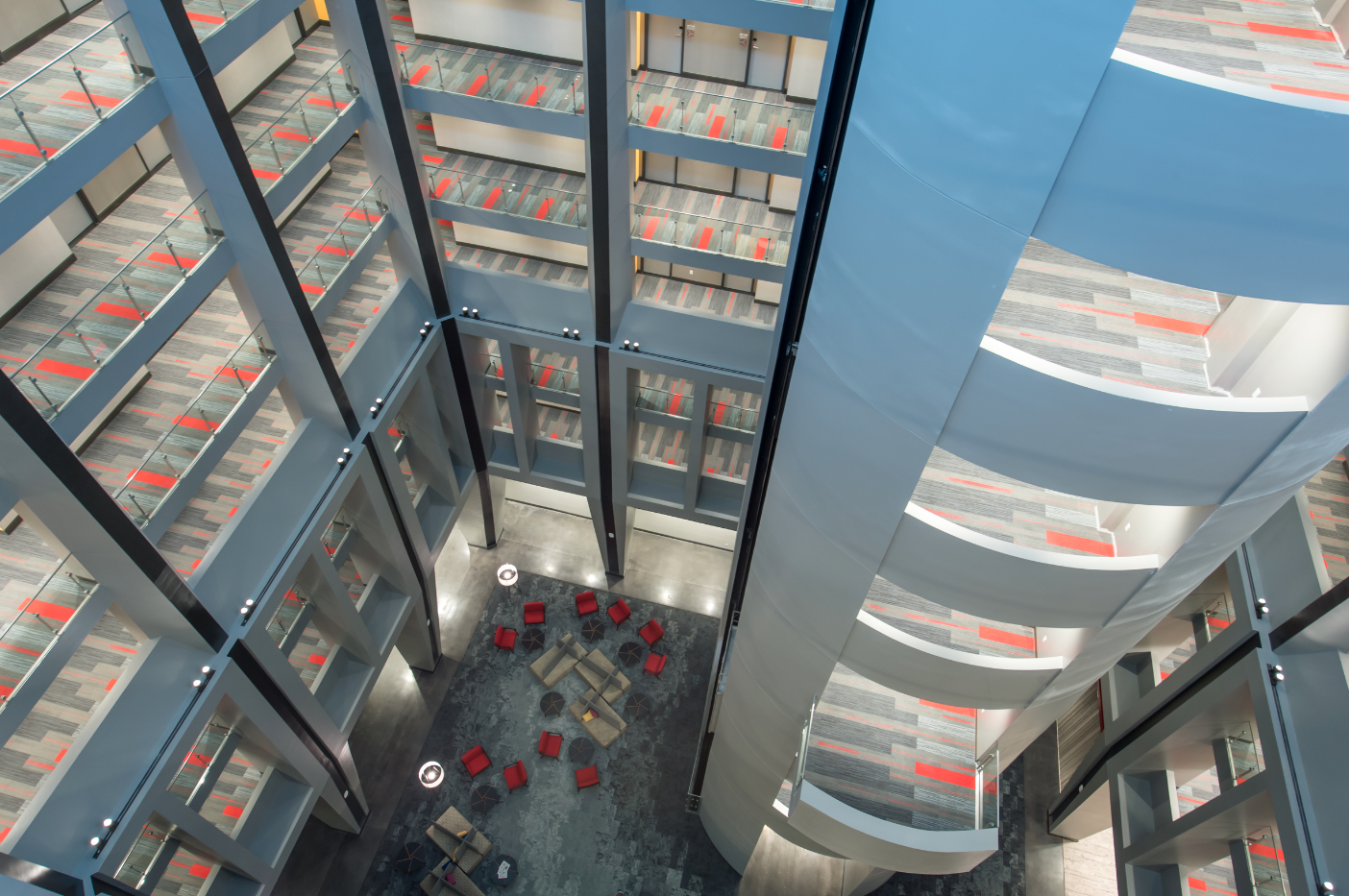 Photo: Mike Howard Photography
Photo: Mike Howard Photography
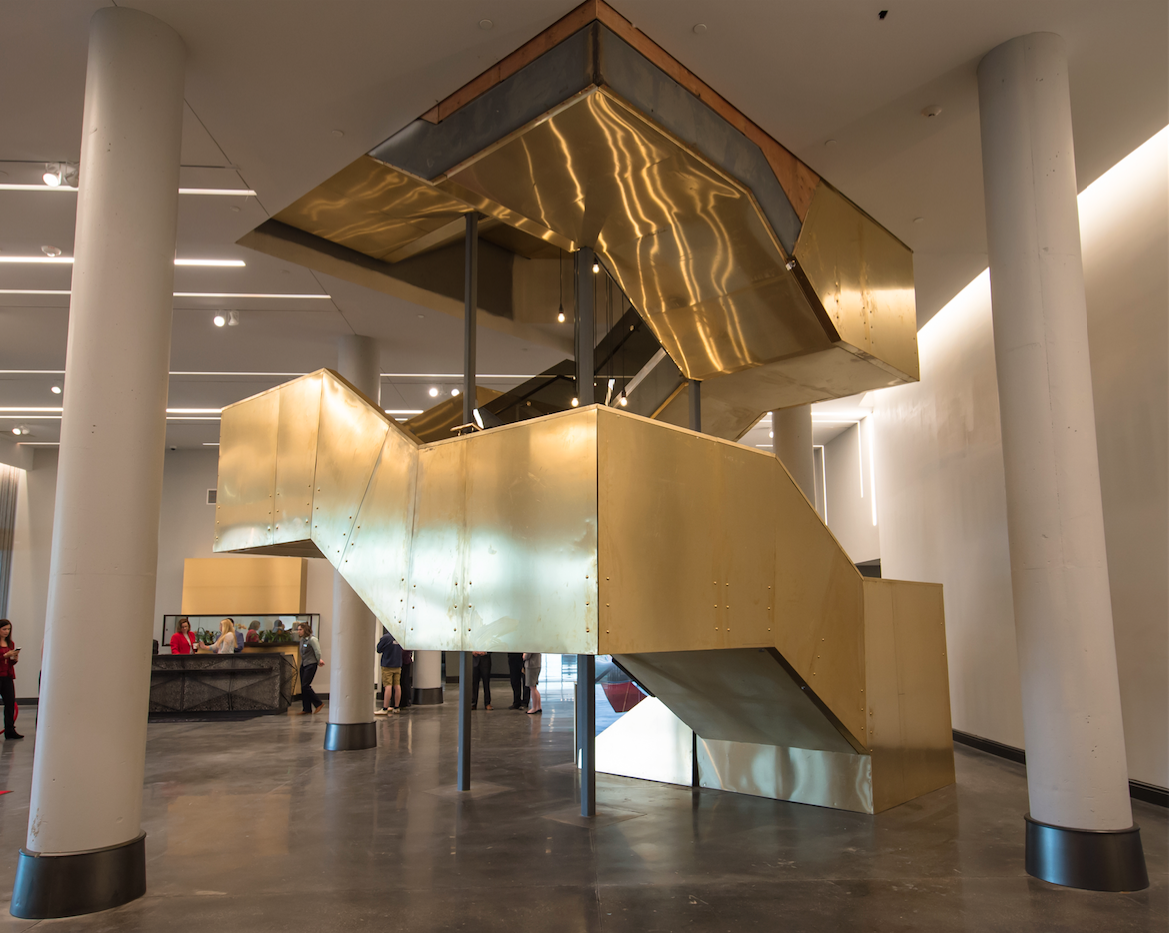 Photo: Mike Howard Photography
Photo: Mike Howard Photography
Related Stories
K-12 Schools | May 13, 2024
S.M.A.R.T. campus combines 3 schools on one site
From the start of the design process for Santa Clara Unified School District’s new preK-12 campus, discussions moved beyond brick-and-mortar to focus on envisioning the future of education in Silicon Valley.
Adaptive Reuse | May 9, 2024
Hotels now account for over one-third of adaptive reuse projects
For the first time ever, hotel to apartment conversion projects have overtaken office-to-residential conversions.
MFPRO+ Special Reports | May 6, 2024
Top 10 trends in affordable housing
Among affordable housing developers today, there’s one commonality tying projects together: uncertainty. AEC firms share their latest insights and philosophies on the future of affordable housing in BD+C's 2023 Multifamily Annual Report.
Retail Centers | May 3, 2024
Outside Las Vegas, two unused office buildings will be turned into an open-air retail development
In Henderson, Nev., a city roughly 15 miles southeast of Las Vegas, 100,000 sf of unused office space will be turned into an open-air retail development called The Cliff. The $30 million adaptive reuse development will convert the site’s two office buildings into a destination for retail stores, chef-driven restaurants, and community entertainment.
Adaptive Reuse | Apr 29, 2024
6 characteristics of a successful adaptive reuse conversion
In the continuous battle against housing shortages and the surplus of vacant buildings, developers are turning their attention to the viability of adaptive reuse for their properties.
Mixed-Use | Apr 13, 2024
Former industrial marina gets adaptive reuse treatment
At its core, adaptive reuse is an active reimagining of the built environment in ways that serve the communities who use it. Successful adaptive reuse uncovers the latent potential in a place and uses it to meet people’s present needs.
Mixed-Use | Apr 9, 2024
A surging master-planned community in Utah gets its own entertainment district
Since its construction began two decades ago, Daybreak, the 4,100-acre master-planned community in South Jordan, Utah, has been a catalyst and model for regional growth. The latest addition is a 200-acre mixed-use entertainment district that will serve as a walkable and bikeable neighborhood within the community, anchored by a minor-league baseball park and a cinema/entertainment complex.
Adaptive Reuse | Apr 5, 2024
McHugh Construction completes restoration of Chicago’s historic Ramova Theatre
Adaptive reuse project turns 1929 cinema into a live performance venue, adds a brewery and a taproom, and revives the Ramova Grill in Chicago’s Bridgeport neighborhood.
Adaptive Reuse | Mar 30, 2024
Hotel vs. office: Different challenges in commercial to residential conversions
In the midst of a national housing shortage, developers are examining the viability of commercial to residential conversions as a solution to both problems.
Cultural Facilities | Mar 26, 2024
Renovation restores century-old Brooklyn Paramount Theater to its original use
The renovation of the iconic Brooklyn Paramount Theater restored the building to its original purpose as a movie theater and music performance venue. Long Island University had acquired the venue in the 1960s and repurposed it as the school’s basketball court.


